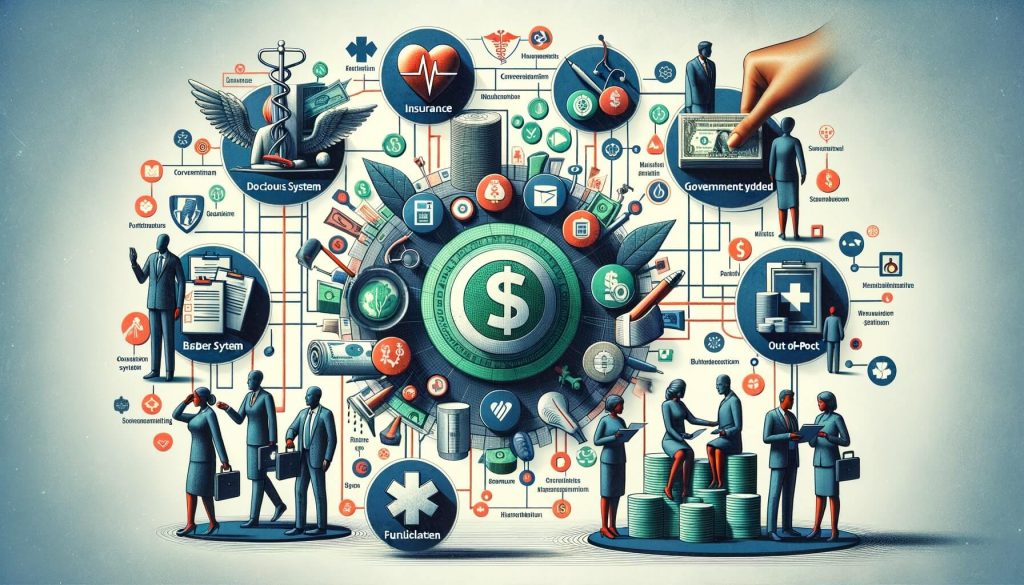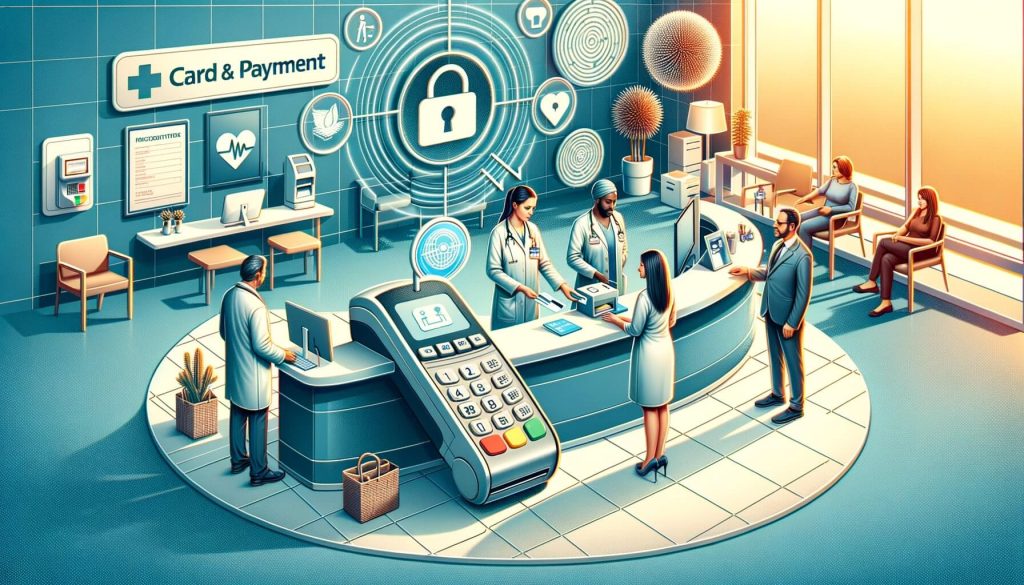In today’s rapidly evolving healthcare landscape, patient satisfaction has become a critical factor for healthcare providers. Patients are no longer just seeking quality medical care; they also expect a seamless and convenient payment experience. Offering multiple payment options has emerged as a key strategy for healthcare facilities to enhance patient satisfaction.
By providing patients with a variety of payment methods, healthcare providers can cater to individual preferences and improve overall patient experience.
Understanding Patient Satisfaction and its Impact on Healthcare Providers

Patient satisfaction plays a crucial role in the success of healthcare providers. Satisfied patients are more likely to adhere to treatment plans, recommend the facility to others, and return for future healthcare needs. On the other hand, dissatisfied patients may seek care elsewhere, leading to a loss of revenue and reputation for the healthcare facility. Therefore, it is essential for healthcare providers to prioritize patient satisfaction and identify areas where improvements can be made, including the payment process.
The Benefits of Offering Multiple Payment Options to Patients

1. Convenience and Flexibility: One of the primary benefits of offering multiple payment options is the convenience and flexibility it provides to patients. Different individuals have different preferences when it comes to payment methods. Some may prefer traditional methods such as cash or checks, while others may prefer digital options like credit or debit cards, mobile payments, or online portals. By offering a range of payment options, healthcare providers can cater to the diverse needs and preferences of their patients, ensuring a seamless and hassle-free payment experience.
2. Improved Financial Management: Multiple payment options also benefit healthcare providers by improving their financial management. By offering electronic payment methods, such as credit or debit cards, healthcare facilities can streamline their revenue collection process. Electronic payments are faster, more secure, and easier to track, reducing the administrative burden associated with manual payment processing. This, in turn, allows healthcare providers to allocate their resources more efficiently and focus on delivering quality patient care.
3. Increased Revenue: Offering multiple payment options can also lead to increased revenue for healthcare providers. By providing patients with convenient payment methods, healthcare facilities can reduce the likelihood of delayed or missed payments. Patients are more likely to pay their bills promptly when they have access to payment options that align with their preferences. This, in turn, improves cash flow for healthcare providers and reduces the need for costly collection efforts.
4. Enhanced Patient Experience: A positive payment experience contributes to overall patient satisfaction. By offering multiple payment options, healthcare providers can create a patient-centric environment that prioritizes convenience and ease of use. Patients who have a positive payment experience are more likely to view the healthcare facility in a positive light and feel valued as customers. This can lead to increased patient loyalty and positive word-of-mouth referrals, benefiting the reputation and success of the healthcare provider.
Exploring Different Payment Options for Healthcare Services

1. Cash and Checks: While traditional payment methods like cash and checks may seem outdated in today’s digital age, they still hold value for certain patient populations. Some patients may prefer to pay in cash or write a check due to personal preferences or lack of access to digital payment methods. Healthcare providers should ensure that they have systems in place to accept and process cash and check payments securely.
2. Credit and Debit Card Payments: Credit and debit card payments have become increasingly popular in healthcare settings due to their convenience and security. Healthcare providers can partner with payment processors to accept card payments, either in person or online. This allows patients to pay their bills using their preferred cards, providing them with a familiar and convenient payment experience.
3. Mobile Payment Solutions: The rise of smartphones has paved the way for mobile payment solutions in healthcare. Mobile payment apps, such as Apple Pay, Google Pay, or Samsung Pay, allow patients to make payments using their smartphones. These apps securely store payment information, making it easy for patients to pay their bills with just a few taps on their devices. Healthcare providers can integrate mobile payment solutions into their existing payment systems to offer patients a seamless and contactless payment experience.
4. Online Payment Portals: Online payment portals have gained popularity in various industries, including healthcare. These portals allow patients to view and pay their bills online, at their convenience. Patients can access their account information, view detailed statements, and make payments using their preferred payment methods. Online payment portals provide a user-friendly interface and secure payment processing, ensuring a seamless and efficient payment experience for patients.
Implementing Credit and Debit Card Payments in Healthcare Facilities

Implementing credit and debit card payments in healthcare facilities can significantly enhance patient satisfaction. Here’s a detailed guide on how healthcare providers can successfully integrate card payments into their payment processes:
1. Partner with a Payment Processor: Healthcare providers should partner with a reputable payment processor that specializes in healthcare payments. The payment processor will provide the necessary infrastructure and support to accept and process card payments securely. It is crucial to choose a payment processor that complies with industry standards and regulations, such as the Payment Card Industry Data Security Standard (PCI DSS).
2. Upgrade Payment Systems: Healthcare facilities need to upgrade their payment systems to accept card payments. This may involve installing card readers at the front desk or implementing online payment portals that support card payments. The payment processor will guide healthcare providers through the necessary hardware and software upgrades to ensure seamless integration with their existing systems.
3. Train Staff: It is essential to train staff on how to process card payments accurately and securely. Staff should be familiar with the payment process, including how to handle card information, issue receipts, and troubleshoot any payment-related issues. Training should also include educating staff on the importance of data security and patient privacy when handling card payments.
4. Communicate with Patients: Healthcare providers should communicate the availability of card payment options to their patients. This can be done through various channels, such as signage in waiting areas, website announcements, or direct communication during patient visits. Clear and concise communication will ensure that patients are aware of the payment options available to them and can make informed decisions.
The Role of Mobile Payment Solutions in Enhancing Patient Satisfaction
Mobile payment solutions have revolutionized the way people make payments, and healthcare is no exception. Here’s a detailed guide on how healthcare providers can leverage mobile payment solutions to enhance patient satisfaction:
1. Research Mobile Payment Apps: Healthcare providers should research and identify mobile payment apps that are widely used and trusted by patients. Popular options include Apple Pay, Google Pay, and Samsung Pay. It is essential to choose apps that are compatible with the majority of smartphones to ensure maximum accessibility for patients.
2. Integrate Mobile Payment Apps: Healthcare providers can integrate mobile payment apps into their existing payment systems. This can be done by partnering with a payment processor that supports mobile payments or by utilizing software solutions that offer built-in mobile payment integration. The integration process may involve configuring the payment system to accept mobile payments and ensuring compatibility with the chosen mobile payment apps.
3. Promote Mobile Payment Options: Healthcare providers should actively promote the availability of mobile payment options to their patients. This can be done through various channels, such as website banners, social media posts, or email newsletters. Clear and concise messaging should highlight the benefits of mobile payments, such as convenience, security, and contactless transactions.
4. Provide Instructions and Support: To ensure a smooth payment experience, healthcare providers should provide clear instructions on how to use mobile payment apps. This can be done through instructional videos, step-by-step guides, or in-person assistance. It is crucial to offer support to patients who may have questions or encounter difficulties during the payment process.
Leveraging Online Payment Portals for Convenient Healthcare Transactions
Online payment portals have become a popular choice for patients seeking convenient and secure payment options. Here’s a detailed guide on how healthcare providers can leverage online payment portals to enhance patient satisfaction:
1. Choose a Secure Payment Portal: Healthcare providers should choose a secure online payment portal that complies with industry standards and regulations. The payment portal should offer robust security features, such as encryption and tokenization, to protect patient payment information. It is essential to partner with a reputable payment portal provider that specializes in healthcare payments.
2. Integrate with Existing Systems: Healthcare providers need to integrate the online payment portal with their existing systems, such as electronic health record (EHR) systems or practice management software. This integration allows for seamless data transfer and ensures that patient information is accurately reflected in the payment portal. The payment portal provider will guide healthcare providers through the integration process and provide technical support as needed.
3. Customize the Payment Portal: Healthcare providers should customize the payment portal to align with their branding and user experience. This includes adding the healthcare facility’s logo, colors, and relevant messaging. Customization helps create a cohesive and familiar payment experience for patients, reinforcing the healthcare provider’s brand identity.
4. Educate Patients on Portal Usage: Healthcare providers should educate their patients on how to use the online payment portal effectively. This can be done through instructional videos, user guides, or in-person demonstrations. Clear and concise instructions should cover topics such as creating an account, accessing billing statements, and making payments. It is crucial to provide ongoing support to patients who may have questions or encounter difficulties while using the payment portal.
Integrating Payment Plans and Financing Options for Patient Flexibility
Healthcare services can be costly, and not all patients have the financial means to pay their bills in full at the time of service. Offering payment plans and financing options can provide patients with the flexibility they need to manage their healthcare expenses. Here’s a detailed guide on how healthcare providers can integrate payment plans and financing options:
1. Assess Patient Needs: Healthcare providers should assess the financial needs of their patient population to determine the types of payment plans and financing options that would be most beneficial. This can be done through surveys, interviews, or analysis of patient demographics. Understanding patient needs will help healthcare providers design payment plans and financing options that align with their patients’ financial capabilities.
2. Partner with Financing Providers: Healthcare providers can partner with financing providers that specialize in healthcare financing. These providers offer flexible payment plans and financing options tailored to the healthcare industry. It is crucial to choose financing partners that offer competitive interest rates, transparent terms, and excellent customer service.
3. Communicate Payment Options: Healthcare providers should clearly communicate the availability of payment plans and financing options to their patients. This can be done through various channels, such as signage in waiting areas, website announcements, or direct communication during patient visits. Clear and concise messaging should highlight the benefits of payment plans and financing options, such as affordable monthly payments and interest-free periods.
4. Streamline Application Process: To ensure a seamless experience, healthcare providers should streamline the application process for payment plans and financing options. This can be done by offering online application forms, providing assistance with completing the forms, or integrating the application process with the online payment portal. It is crucial to minimize paperwork and simplify the approval process to reduce patient burden and increase accessibility.
Addressing Common Concerns and FAQs about Multiple Payment Options
Implementing multiple payment options in healthcare facilities may raise concerns and questions among patients. Healthcare providers should proactively address these concerns and provide clear answers to frequently asked questions (FAQs). Here are some common concerns and FAQs about multiple payment options:
Q1. Is my payment information secure?
Healthcare providers should assure patients that their payment information is secure. This can be done by highlighting the security measures in place, such as encryption, tokenization, and compliance with industry standards like PCI DSS. It is essential to partner with reputable payment processors, mobile payment app providers, or online payment portal providers that prioritize data security.
Q2. What payment options are available?
Healthcare providers should clearly communicate the payment options available to patients. This can be done through various channels, such as signage in waiting areas, website announcements, or direct communication during patient visits. Clear and concise messaging should outline the different payment methods accepted, including cash, checks, credit/debit cards, mobile payments, and online payment portals.
Q3. Can I set up a payment plan?
Healthcare providers should inform patients about the availability of payment plans and financing options. Clear and concise messaging should highlight the benefits of payment plans, such as affordable monthly payments and interest-free periods. It is crucial to provide information on how patients can apply for payment plans and the criteria for eligibility.
Q4. How can I access my billing statements?
Healthcare providers should educate patients on how to access their billing statements. This can be done through instructional videos, user guides, or in-person demonstrations. Clear and concise instructions should cover topics such as creating an account, logging in, and navigating the online payment portal. It is crucial to provide ongoing support to patients who may have questions or encounter difficulties while accessing their billing statements.
Conclusion
Offering multiple payment options in healthcare facilities is a strategic approach to enhance patient satisfaction. By providing patients with a variety of payment methods, healthcare providers can cater to individual preferences and improve overall patient experience. The convenience, flexibility, and improved financial management associated with multiple payment options benefit both patients and healthcare providers.
Whether it’s implementing credit and debit card payments, leveraging mobile payment solutions, utilizing online payment portals, or integrating payment plans and financing options, healthcare providers can create a patient-centric environment that prioritizes convenience and ease of use.
By addressing common concerns and providing clear answers to frequently asked questions, healthcare providers can ensure a seamless and hassle-free payment experience for their patients. Ultimately, offering multiple payment options contributes to increased patient satisfaction, improved revenue management, and enhanced reputation for healthcare providers in today’s competitive healthcare landscape.
